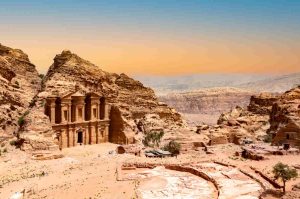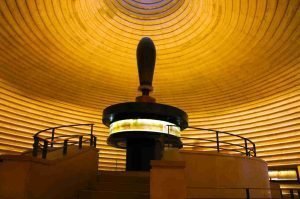Byzantine art achieved great mastery. And many of the destinations covered by our agencies are located in the territory of what was once that empire. Therefore, in our trips we can take you to discover the most iconic monuments and archaeological remains of that civilization. Here are some examples.
The pearls of Istanbul
Of course, in Istanbul you can soak up Byzantine culture, since this city (formerly called Byzantium and then Constantinople) was the capital of that great empire, until its final fall with the Ottoman conquest in 1453. And here are some of the symbols of its architecture, in many cases later distorted by the new dominating power, of Islamic religion.
Hagia Sophia is the most outstanding example of that civilization, a masterpiece of Antemius of Tralles and Isidore of Miletus, initially conceived as a Christian basilica and later converted into a mosque, at which time the Ottoman minarets were added. Also by these architects and from the time of Emperor Justinian I is the Little Hagia Sophia, also called the church of Saints Sergius and Bacchus.
Byzantine mosaics in Jordan
The Byzantine Empire was the ‘heir’ of the Roman Empire in the Near East, as it actually derived from the division between the Western Roman Empire (with its capital in Rome) and the Eastern Roman Empire (with its capital in Constantinople). Therefore, some artistic manifestations are a clear evolution of the Roman ones. In particular, its beautiful mosaics: while many of them were used to decorate walls, others were used to cover floors in an artistic way.
For many, the most spectacular Byzantine mosaic is that of St. George’s Church in Madaba, Jordan. It is a large map of the Holy Land made in the 6th century and is considered the first cartographic representation of this place so sacred to Jews, Christians and Muslims.
In addition to the one in Madaba, there are many other mosaics in this country. Also noteworthy are those of Mount Nebo, the place from which the prophet Moses contemplated the Promised Land, or those still preserved in Jerash, an ancient Roman and later Byzantine city.
Icons… never better said
And in this post about the most iconic works of the Byzantine period we could not overlook the icons, mainly panel paintings of religious themes that reached its zenith in the time of this civilization and have remained as religious and artistic reference in the Orthodox Church. And not without conflict, as evidenced by the various schisms between those who venerated these images and those who considered them a kind of heresy (iconoclasts).
These types of images can be found in many of the countries where we can take you on a trip. But it is worth highlighting a unique place in this regard: the Monastery of St. Catherine of Sinai in Egypt. This monastery, also called the Monastery of the Transfiguration, is located on the Sinai Peninsula, very close to where Moses received the Tablets of the Law and where St. Catherine received sacred burial.
In this monastery there is a small museum that exhibits some of the oldest and most venerated icons of the oriental religious tradition. The famous Pantocrator of Sinai (7th century), the Apostle St. Peter (6th-7th centuries) or the Staircase of the Divine Ascent (12th century) are worth mentioning. Some of them also represent miracles and episodes that occurred here, such as that of Moses and the Burning Bush, in reference to the miracle that the prophet witnessed in this same place.
But these are just a few examples of how much and very interesting Byzantine art can be found in Mandala Tours trips, which is also very present on the coasts of the Aegean Sea, in the Greek Islands and in many other charming destinations where we can take you on a trip.





